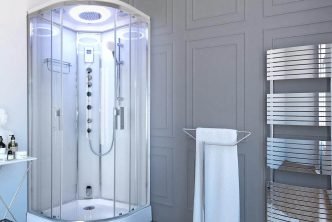An indoor air quality monitoring system is a vital tool for most commercial spaces and residential spaces with indoor air pollution being more hazardous than outdoor air pollution. No matter how frequently you clean your home, minuscule amounts of dust, filth, pollen, and bacteria always manage to get inside. Therefore, it is crucial to invest in a reliable air quality monitor to keep an eye on the quality of the air you breathe, especially if you live in a rural location with significant pollution or only an area with a few trees to filter the air.
With an indoor air quality monitoring system, you may get precise measurements of the different contaminants in and around your living area if you have an indoor air quality monitoring system. If the readings are low, you can purchase an air purifier, replace your air filters, clean the air ducts, or spend money on a new heating or air conditioning system. In this manner, you can always be aware of the air quality in your home and adjust as necessary based on your monitor.
IMPROVE INDOOR AIR QUALITY
Given that we spend the majority of our time indoors these days and are therefore continually exposed to indoor air, it is crucial to improve the quality of the air inside our residential and commercial spaces. Employers and building owners place a high priority on air quality monitoring because, in particular, commercial spaces have large populations of people coming and going, many of whom are customers of our businesses. As building owners, it is our duty to maintain a safe and healthy workplace for both employees and consumers.
The process of determining indoor air quality includes air sampling, testing, and parameter analysis of the collected sample. Burning wood, dung, and charcoal for cooking in homes is a major cause of indoor air pollution. Indoor air quality refers to the state of the air inside of buildings as indicated by humidity, temperature, and air contaminants that may have an impact on occupants’ comfort, health, and productivity.
Health impacts from exposure to poor air quality include throat, nose, and eye irritation. You’ll also have weariness, dizziness, and headaches as a result. Cancer, heart disease, and respiratory conditions are the biggest health effects. While certain pollutants have been linked to unfavorable health impacts, there are still other indoor air quality problems that are not fully understood scientifically. Sick building syndrome, which happens when building residents feel comparable symptoms after visiting a specific building, with symptoms reducing or vanishing when they leave, is one of the known effects of poor low air quality. More and more factors related to indoor air quality in buildings are being blamed for these symptoms.
MEASURE INDOOR AIR QUALITY
Using a device known as an indoor air quality sensor, which measures the concentrations of different volatile organic compounds, you can assess the quality of the air within a building. These sensors can also pick up ketones, which are prevalent in breath and can accumulate in busy areas, as well as formaldehyde, a toxin released by new carpets. You can use radon and carbon dioxide meters to determine whether the levels of these gases have risen to a dangerous level. As they cannot be detected by the senses and the harm to health that their presence typically causes is gradual, this is the only method to be certain that these gases are having a negative impact on the environment.
In order to ensure a supply of fresh air and reduce the risk of indoor air pollution from sources such as filthy air ventilation, ozone, radon, and carbon monoxide, it is crucial for a building to have a flow of high indoor air quality throughout the entire structure. Your health may be negatively impacted by indoor air pollution both now and in the future. It is important to understand what contributes to indoor air pollution and how we can raise indoor air quality. Therefore, keep your houses and offices in a high-quality environment on a frequent basis for better health.





